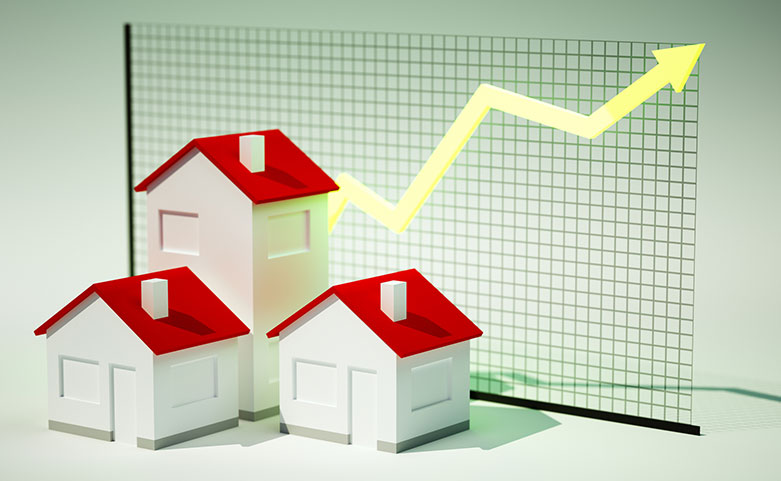Odd’s are you’ve heard buzz about Canada’s economy lately.
What’s going on? The housing market is cooling down and mortgage rates are set to rise before the end of the year. Why? Because the Canadian economy is thriving and inflation is picking up – causing banks to raise interest rates.
How does that affect Canadians?
- Access to low mortgage rates are for the most part coming to an end.
- A gradual rise will soon begin.
- It’s time to prepare – especially if you’re a new homeowner.
Fixed Mortgage Rates Vs. Variable Mortgage Rates
Fixed Mortgage Rates
What is a fixed mortgage?
66% of Canadians currently have a fixed mortgage, which locks them into a fixed mortgage payment term – most commonly for five years at a time.
Why do fixed mortgages fluctuate?
The main reason your fixed mortgage rate may fluctuate when you renew is due to the Canadian Government bond yield. A bond yield is the return investors will receive when they hold a bond to its maturity. Typically, when government bond yields go up, mortgage rates tend to follow.
How The Stock Market Effects Bonds
When the stock market is doing well:
Investors make higher returns on their equity investments than they do on their bond investments. This then decreases the value and demand for bonds. As bond prices decrease, bond yield increases and therefore fixed rates typically rise in alignment.
When the stock market is not doing well:
Investors are likely to invest in safer investments, such as bonds. This causes the demand for bonds to grow, and price of bonds to increase. When the bond yield drops, fixed rates drop.
PROs: Fixed rates are predictable and holders will not see an increase in their rate until their time to renew and take on a new rate.
CONs: Accessing a low fixed rate is all about timing, and fixed rate holders are locked into their rate until they can refinance.

Variable Mortgage Rates
What is a variable mortgage rate?
Some 30% of Canadian’s have a variable mortgage, which is tied to a lender’s prime rate.
Why do variable mortgages fluctuate?
Variable mortgage rates are linked to prime rates. Therefore, when prime rates rise, variable mortgage rates and monthly payments rise. Variable mortgage rates are represented in relation to a lenders prime rate.
The Bank of Canada sets overnight lending rates in which banks can borrow at – giving the government control to manipulate the Canadian economy. Each bank then has the decision to adjust their prime rate as they wish.
Some History
As rates were dropping in the last 10 years, the five largest banks have rarely, if at all, matched the Bank of Canada rate decisions. Most commonly, the BOC would drop .25% and the big banks would typically drop roughly 10% – 15%.
Typically, the big five match each other. Today, four of the big five have their prime set at 2.95%, while TD has not matched the others since early 2017 – their current prime rate is set at 3.10%.
Types of Variable Rates
Variable Rate
When the prime rate changes, the payment stays the same. However, the amount going to pay interest increases, resulting in less being applied to reducing the principal. In Canada, lenders will not change this unless the interest portion becomes greater than the payment amount – something that rarely happens.
Adjustable Rate Mortgage (ARM)
When the prime rate changes, the lender notifies the borrower, and the payment is adjusted so they remain on the same amortization schedule.
Example:
A mortgage set up on July 11, 2017 (day before the rate increase) for $350,000, with a 5-year variable at prime minus .65% (2.70% less .65% = 2.05%), and 25-year amortization, had a monthly payment of $1,490.54. This payment was further broken down to $595.38 paid in interest and $895.16 in principal repayment.
This exact same mortgage, set up on July 12, 2017 (after the rate increase of .25%), would have a monthly payment of $1,533.24, an increase of $42.70. This payment would be further broken down to $667.64 paid in interest and $865.60 in principal repayment.
The ARM mortgages would be increased by approximately $42.70.
The variable mortgages would be paying approximately $42.70 less on the principal of their mortgage.
PROs: Examined historically, variable rates have proven to be less expensive over time.
CONs: Variable rates are more unpredictable than fixed rates, and holders should prepare to pay more in interest and less towards capital if rates rise.
How The Mortgage Station Can Help
At The Mortgage Station, we’ll work with you step by step through the process. We will review the rate and term choices that will best fit your scenario, and will help you to determine if you should go with a fixed or variable rate. We will also explain how lenders treat a mortgage going from variable to fixed and will make sure that you have a clear understanding of what rates and terms would apply.
Contact us today at 705.812.4490 to learn more.


